| Re: Architectural Wonders From Pre-colonial Africa - Pics by ednut1(m): 8:35am On Mar 21, 2015 |
the black man is taking his revenger gradually. by 3000 AD. white will b minority cos blk dudes for don nak all d white babes to born half caste which are still blk  |
| Re: Architectural Wonders From Pre-colonial Africa - Pics by onuwaje(m): 8:54am On Mar 21, 2015 |
Westernisation and colonisation the true roots of the negativity in Africa 1 Like |
|
| Re: Architectural Wonders From Pre-colonial Africa - Pics by Nobody: 9:59am On Mar 21, 2015 |
bigfrancis21:
Do you need XXL spectacles to see that it has already been done and the page moved to the front page?  Sorry, I use medicated glasses (which I don't like using), however the fonts aren't black, they're grey hence the optical illusion. Hope we're even? |
| Re: Architectural Wonders From Pre-colonial Africa - Pics by myouri(f): 1:52pm On Mar 21, 2015 |
Waaaooohh!! Awesome. |
| Re: Architectural Wonders From Pre-colonial Africa - Pics by Nobody: 6:25pm On Mar 21, 2015 |
|
| Re: Architectural Wonders From Pre-colonial Africa - Pics by bigfrancis21: 6:32pm On Mar 21, 2015 |
lomomike:
Sorry, I use medicated glasses (which I don't like using), however the fonts aren't black, they're grey hence the optical illusion.
Hope we're even? Is this Rossike?  |
| Re: Architectural Wonders From Pre-colonial Africa - Pics by Nobody: 7:32pm On Mar 21, 2015 |
bigfrancis21:
Is this Rossike?  Dude! Why this attitude? Francis, go start up and read thru from even the report I sent to you this morning till this very comment then as me again. |
| Re: Architectural Wonders From Pre-colonial Africa - Pics by bigfrancis21: 7:37pm On Mar 21, 2015 |
lomomike:
Dude! Why this attitude? Francis, go start up and read thru from even the report I sent to you this morning till this very comment then as me again. Calm down dude. I only asked you a question because you came off to me as Rossike's alternative account. |
| Re: Architectural Wonders From Pre-colonial Africa - Pics by Fulaman198(m): 4:07pm On Apr 02, 2015 |
Rossikk:
Great Zimbabwe Ruins - 1100 AD
Great Zimbabwe is a ruined city in the southeastern hills of Zimbabwe near Lake Mutirikwe and the town of Masvingo. It was the capital of the Kingdom of Zimbabwe during the country's Late Iron Age. Construction on the monument by ancestors of the Shona people began in the 11th century and continued until the 15th century,[1][2] spanning an area of 722 hectares (1,780 acres) which, at its peak, could have housed up to 18,000 people. It is recognised as a World Heritage Site by UNESCO.
Great Zimbabwe served as a royal palace for the Zimbabwean monarch and would have been used as the seat of political power. One of its most prominent features were the walls, some of which were over five metres high and which were constructed without mortar.

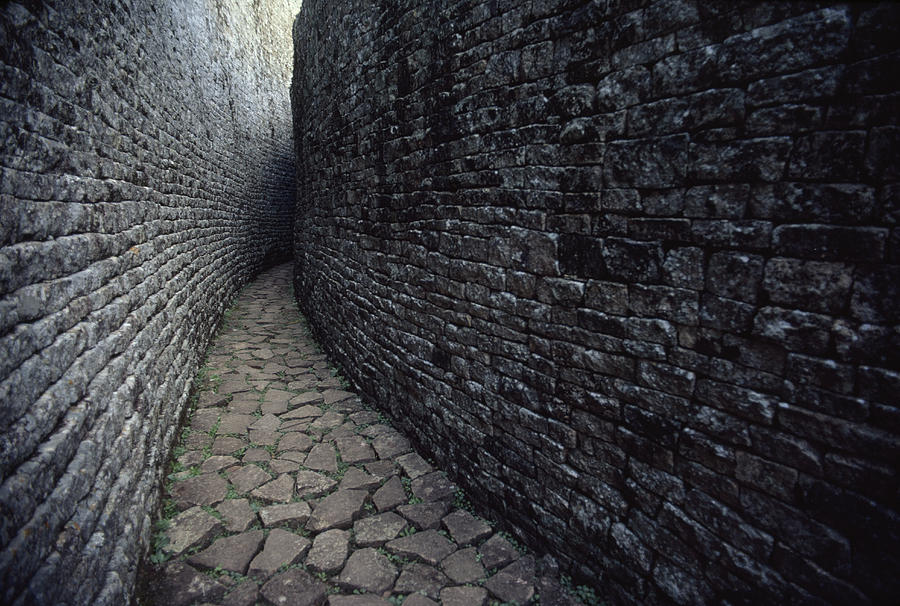


Ruins of Kilwa Kisiwani (Tanzania) 800 AD
Kilwa Kisiwani is an archaeological city-state site located along the Swahili Coast on the Kilwa archipelago. It was occupied from at least the 8th century AD and became one of the most powerful settlements along the coast.
Kilwa Kisiwani reached its highest point in wealth and commerce between 13th and 15th centuries AD
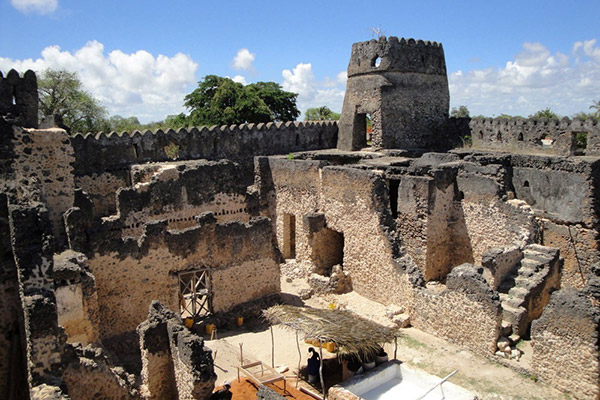



Replica of a Chief's House in Ancient Benin Nigeria

The Walls of Benin, Nigeria: 800 AD
Man-made wonders of the world such as the Taj Mahal in India, the Cairo Citadel in Egypt and the Colosseum in Rome attract millions of visitors each year and lay claim to represent the architectural brilliance of our past. But the Benin Moat, also known as the Walls of Benin, lays fallow, crumbling away in Nigeria, a pale imitation of its resplendent former self. At stake is not just the structure itself, but the memory of a once-great empire and a site of colonial resistance.
A benign development?
The Benin Empire (1440–1897) was a pre-colonial African state, which at its height stretched from the western Igbo tribes on the shores of the Niger River, through parts of the south-west including present day Ondo State, and the isolated islands of Lagos. The empire was famed for nurturing of artistic creativity and using advanced techniques in its bronze and ivory sculptures (especially its life-sized bronze heads) that predate similar works in the Western world.
Construction started on the Walls of Benin in 800 AD, now situated in modern day Benin City, capital of Edo State, and continued into the mid-1400s. Stretching seemingly endlessly across the land, the Benin Moat is the world’s second longest man-made construction, falling short of only the Great Wall of China. The Walls of Benin, built as a city fortification against neighbouring rivals such as the Oyo Kingdom to the south and the Sokoto Caliphate in the north, is estimated to be 10,000 miles in length and 2,000 square miles in area. Excavations by British archaeologist Graham Connah in 1960 uncovered a rural network of earthen walls that, he estimated, if spread out over five dry seasons, would have required a workforce of 1,000 labourers working ten hours a day, for seven days a week to construct – a rough total of 150 million man hours.
Kano City Walls Nigeria 1100 AD



Ancient Kano Houses
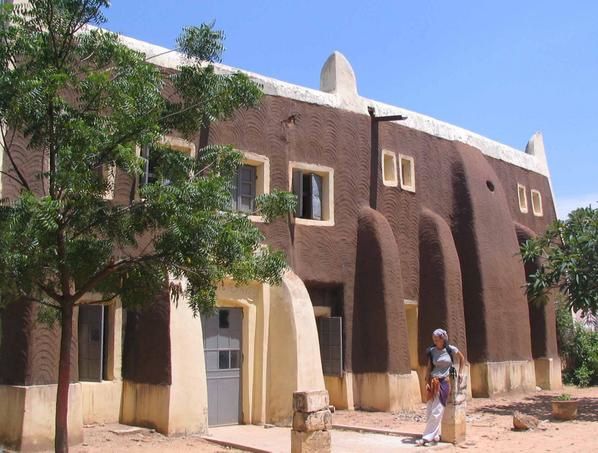

Loropeni Ruins Burkina Faso


The 11,130m2 property, the first to be inscribed in the country, with its imposing stone walls is the best preserved of ten fortresses in the Lobi area and is part of a larger group of 100 stone enclosures that bear testimony to the power of the trans-Saharan gold trade. Situated near the borders of Côte d’Ivoire, Ghana and Togo, the ruins have recently been shown to be at least 1,000 years old. The settlement was occupied by the Lohron or Koulango peoples, who controlled the extraction and transformation of gold in the region when it reached its apogee from the 14th to the 17th century. Much mystery surrounds this site large parts of which have yet to be excavated. The settlement seems to have been abandoned during some periods during its long history. The property which was finally deserted in the early 19th century is expected to yield much more information.
Brief Synthesis
The dramatic and memorable Ruins of Loropéni consist of imposing, tall, laterite stone perimeter walls, up to six metres in height, surrounding a large abandoned settlement. As the best preserved of ten similar fortresses in the Lobi area, part of a larger group of around a hundred stone-built enclosures, they are part of a network of settlements that flourished at the same time as the trans-Saharan gold trade and appear to reflect the power and influence of that trade and its links with the Atlantic coast. Recent excavations have provided radio-carbon dates suggesting the walled enclosure at Loropéni dates back at least to the 11th century AD and flourished between the 14th and 17th centuries, thus establishing it as an important part of a network of settlements.
Ancient Ghana Empire Ruins (Kumbi Saleh) 900 AD

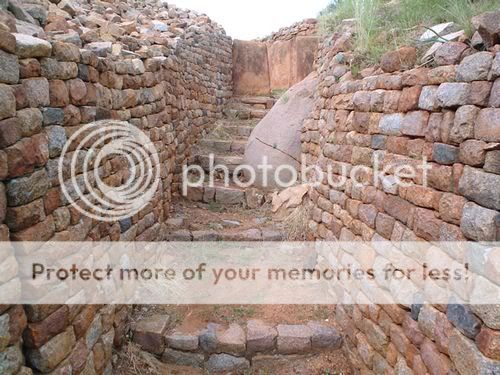






Old Oyo Kingdom Ruins, Nigeria 1100 AD
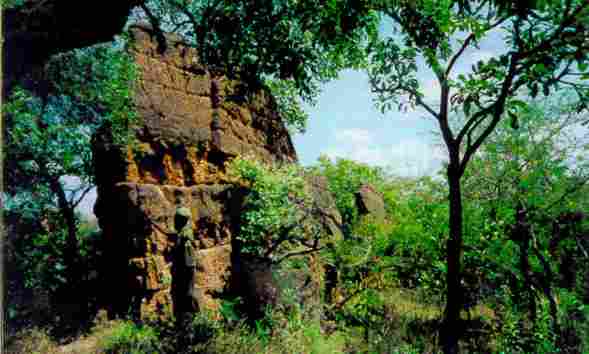
Onitsha Nigeria
These houses are from titled men of Onicha and may have Benin influence.
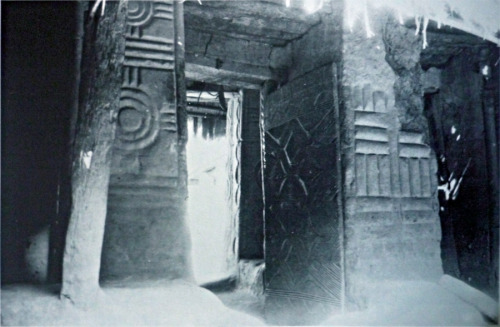
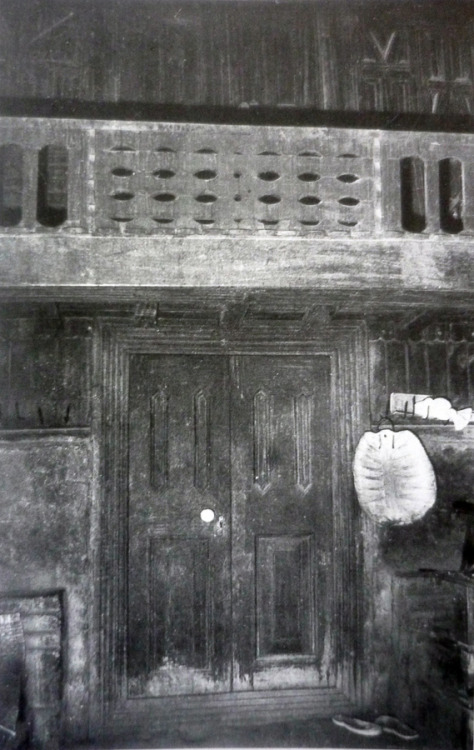
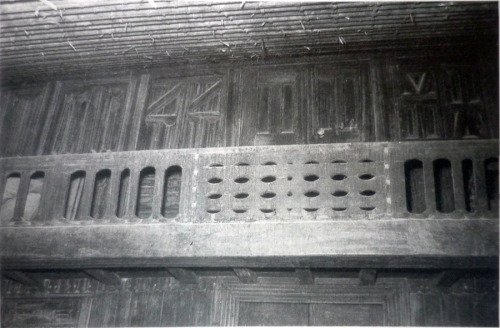
Upstairs balcony.
Temple of Soleb, Sudan 1400 BC

Ruins of Meroe, and Nubian Pyramids Sudan 1200 BC
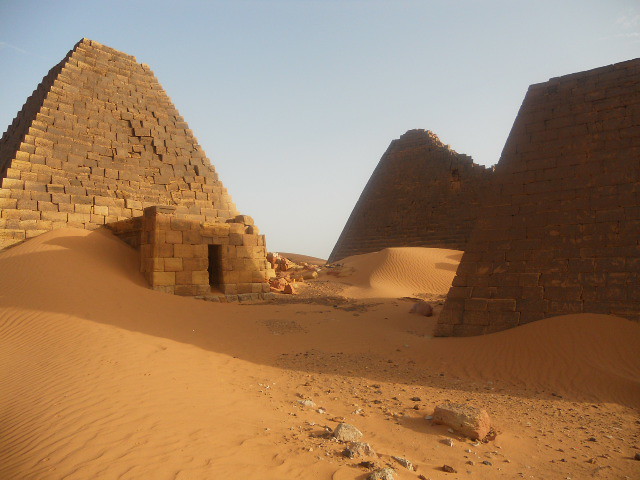
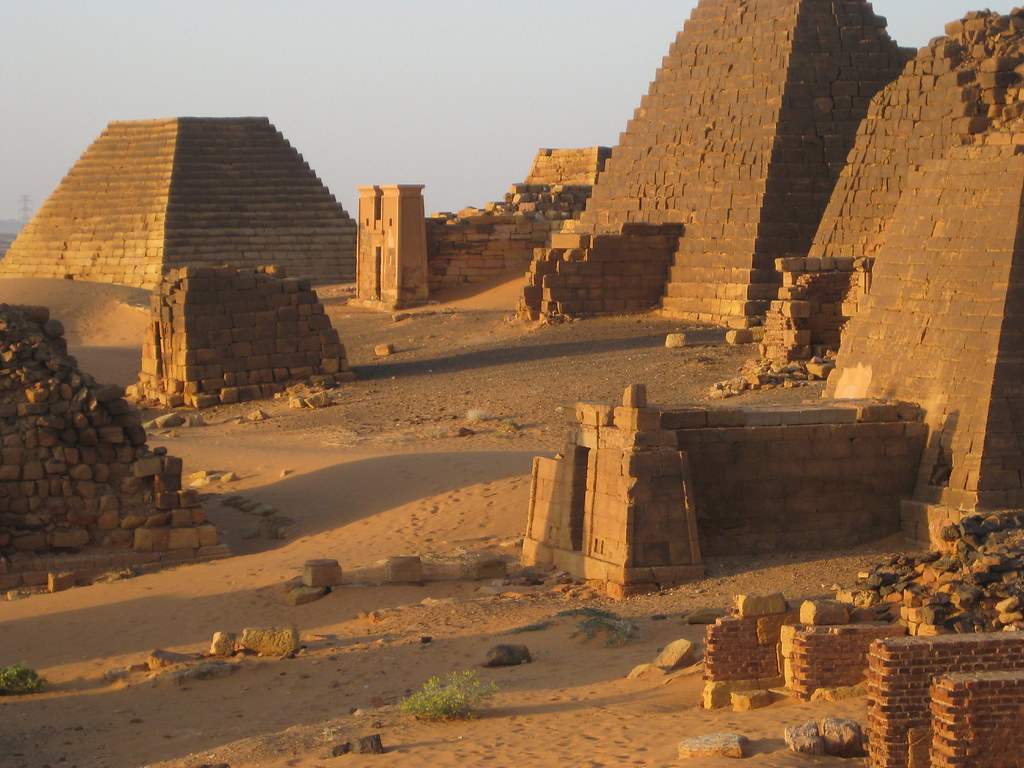
[img]http://orientenresor.se/da/files/2011/12/Nuri-F-31-700x350.jpg[/img]

[img]http://www.peron4.pl/wp-content/uploads/2010/08/sudan_swiatynia.jpg[/img]
Timbuktu, Mali Empire 1100 AD
[img]http://quintessentialruminations.files./2012/04/timbuktu2.jpg[/img]
[img]http://1.bp..com/-RVdWwPdA8BI/T4iCkbFViCI/AAAAAAAAAFI/GNZczkXUTVo/s1600/b087.jpg[/img]
[img]http://3.bp..com/_kxPG6y8Qctk/TFbgsbe1OVI/AAAAAAAAexA/hqGathBBqSs/s800/Sankore+Mosque+-+TIMBUKTU+Photos+%289%29.jpg[/img]
[img]http://1.bp..com/_kxPG6y8Qctk/TFbgiZC_4tI/AAAAAAAAewY/dw3fQ0ZiF_c/s800/Sankore+Mosque+-+TIMBUKTU+Photos+%284%29.jpg[/img]
[img]http://ader.eu/francais/mali/mali3-maison_quartier_bamak.jpg[/img]
Gedi Kenya 1200 AD

Ancient Temple Burkina Faso
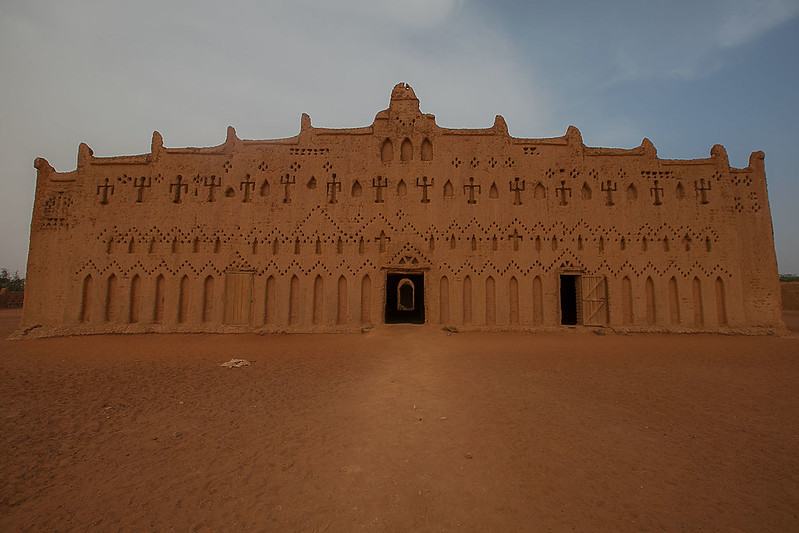
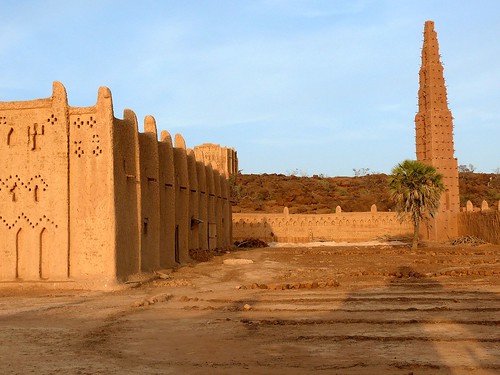
Ruins of Ethiopia (Dated: PRE-HISTORY)




Lalibela Church Ethiopia - Entirely carved from one rock

Obelisk of Axum Ethiopia

Songhai Empire 1400
[img]http://everythingspossible.files./2008/06/p5010061.jpg[/img]
[img]http://everythingspossible.files./2008/06/p5010031.jpg[/img]
Ashanti Empire

Palace of the chief of Foumban Cameroun






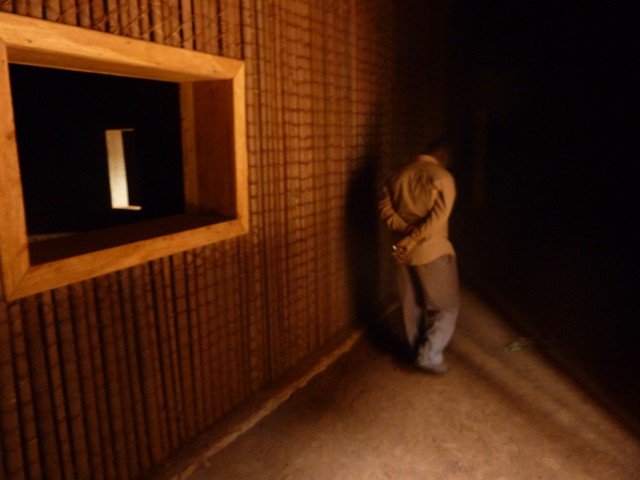
Ancient Benin - British soldiers sitting inside the Oba's palace after burning and looting the complex (1897)

"Ivory Found in City." Courtyard of the Oba's palace, Benin City, February 1897, photographed by a Captain Walker. The object in the center of the courtyard, lying on a large brass cylinder, is a brass serpent head from the palace roof. R. K. Granville Archive Album 64.5, Pitt Rivers Museum, University of Oxford.

A house in Benin city occupied by the British soldiers as a temporary residence.


"The king's wall in Benin City. Benin, Nigeria. Silver gelatin print, 10.2cm x 13.9cm (4" x 5.5"Click the image to open in full size.. Photograph by J. H. Swainson, 1892. Macdonald Niger Coast Protectorate Album, A1996-190138."
The Great Sphinx Egypt (Dated PRE-HISTORY)
[img]http://www.studentsoftheworld.info/infopays/photos/EGY/orig/Sphinx.jpg[/img]

[img]http://bolstablog.files./2010/03/sphinx-riddle.jpg[/img]
Pyramids of Giza Egypt

Why and how did we Africans allow ourselves to fall? |
| Re: Architectural Wonders From Pre-colonial Africa - Pics by tpiadotcom: 4:13pm On Apr 02, 2015 |
how would nigerians who visited Egypt describe the great sphinx back in the days before there was photography? |
| Re: Architectural Wonders From Pre-colonial Africa - Pics by iamord(m): 5:20pm On Apr 02, 2015 |
Fulaman198:
Why and how did we Africans allow ourselves to fall? our Brains has been structured negatively in some aspect. Through events in history. But little has been done to correct them. I can hardly find a modern architecture development that took inspiration from one of this African style architecture. I know a few like the hope city. Villagio etc. But there is still more work to be done.. The buildings look eco friendly. More research into our ancient form of architecture can help in building low cost sustainable and ecologically friendly buildings and communities. 1 Like |
| Re: Architectural Wonders From Pre-colonial Africa - Pics by Fulaman198(m): 5:21pm On Apr 02, 2015 |
iamord:
our Brains has been structured negatively in some aspect. Through events in history. But little has been done to correct them. I can hardly find a modern architecture development that took inspiration from one of this African style architecture. I know a few like the hope city. Villagio etc. But there is still more work to be done.. The buildings look eco friendly. More research into our ancient form of architecture can help in building low cost sustainable and ecologically friendly buildings and communities. 100% agree with you my brother 1 Like |
|
| Re: Architectural Wonders From Pre-colonial Africa - Pics by Nobody: 12:51pm On Apr 05, 2015 |
I think the idea should be to promote this in primary and secondary schools. Flood the books with these pictures, find a long list of African inventions and how they have influenced those of the European. Teach these kids about how the moors once ruled Europe, about how the ancient people of khemet influenced Greek civilization. Show them how everything was once African first. I don't know why African education systems suck up to the white man when even the white people in Africa only study the European systems of education. Educators should really get serious on educating our children if we really want change, i think this is the only way to change the ideology and mentality of Africans about themselves. |
| Re: Architectural Wonders From Pre-colonial Africa - Pics by iamord(m): 1:01pm On Apr 05, 2015 |
nice points pkjag . but it won't come easy. I feel its better to devise a system of positive mind control. to redeem the people in all spheres. it was the same thing being used in the past that caged the black mans mind. it can also unlock it. |
| Re: Architectural Wonders From Pre-colonial Africa - Pics by Rosskii: 4:08am On Apr 08, 2017 |
Rossikk:
Great Zimbabwe Ruins - 1100 AD
Great Zimbabwe is a ruined city in the southeastern hills of Zimbabwe near Lake Mutirikwe and the town of Masvingo. It was the capital of the Kingdom of Zimbabwe during the country's Late Iron Age. Construction on the monument by ancestors of the Shona people began in the 11th century and continued until the 15th century,[1][2] spanning an area of 722 hectares (1,780 acres) which, at its peak, could have housed up to 18,000 people. It is recognised as a World Heritage Site by UNESCO.
Great Zimbabwe served as a royal palace for the Zimbabwean monarch and would have been used as the seat of political power. One of its most prominent features were the walls, some of which were over five metres high and which were constructed without mortar.




Ruins of Kilwa Kisiwani (Tanzania) 800 AD
Kilwa Kisiwani is an archaeological city-state site located along the Swahili Coast on the Kilwa archipelago. It was occupied from at least the 8th century AD and became one of the most powerful settlements along the coast.
Kilwa Kisiwani reached its highest point in wealth and commerce between 13th and 15th centuries AD




Replica of a Chief's House in Ancient Benin Nigeria

The Walls of Benin, Nigeria: 800 AD
Man-made wonders of the world such as the Taj Mahal in India, the Cairo Citadel in Egypt and the Colosseum in Rome attract millions of visitors each year and lay claim to represent the architectural brilliance of our past. But the Benin Moat, also known as the Walls of Benin, lays fallow, crumbling away in Nigeria, a pale imitation of its resplendent former self. At stake is not just the structure itself, but the memory of a once-great empire and a site of colonial resistance.
A benign development?
The Benin Empire (1440–1897) was a pre-colonial African state, which at its height stretched from the western Igbo tribes on the shores of the Niger River, through parts of the south-west including present day Ondo State, and the isolated islands of Lagos. The empire was famed for nurturing of artistic creativity and using advanced techniques in its bronze and ivory sculptures (especially its life-sized bronze heads) that predate similar works in the Western world.
Construction started on the Walls of Benin in 800 AD, now situated in modern day Benin City, capital of Edo State, and continued into the mid-1400s. Stretching seemingly endlessly across the land, the Benin Moat is the world’s second longest man-made construction, falling short of only the Great Wall of China. The Walls of Benin, built as a city fortification against neighbouring rivals such as the Oyo Kingdom to the south and the Sokoto Caliphate in the north, is estimated to be 10,000 miles in length and 2,000 square miles in area. Excavations by British archaeologist Graham Connah in 1960 uncovered a rural network of earthen walls that, he estimated, if spread out over five dry seasons, would have required a workforce of 1,000 labourers working ten hours a day, for seven days a week to construct – a rough total of 150 million man hours.
Kano City Walls Nigeria 1100 AD



Ancient Kano Houses


Loropeni Ruins Burkina Faso


The 11,130m2 property, the first to be inscribed in the country, with its imposing stone walls is the best preserved of ten fortresses in the Lobi area and is part of a larger group of 100 stone enclosures that bear testimony to the power of the trans-Saharan gold trade. Situated near the borders of Côte d’Ivoire, Ghana and Togo, the ruins have recently been shown to be at least 1,000 years old. The settlement was occupied by the Lohron or Koulango peoples, who controlled the extraction and transformation of gold in the region when it reached its apogee from the 14th to the 17th century. Much mystery surrounds this site large parts of which have yet to be excavated. The settlement seems to have been abandoned during some periods during its long history. The property which was finally deserted in the early 19th century is expected to yield much more information.
Brief Synthesis
The dramatic and memorable Ruins of Loropéni consist of imposing, tall, laterite stone perimeter walls, up to six metres in height, surrounding a large abandoned settlement. As the best preserved of ten similar fortresses in the Lobi area, part of a larger group of around a hundred stone-built enclosures, they are part of a network of settlements that flourished at the same time as the trans-Saharan gold trade and appear to reflect the power and influence of that trade and its links with the Atlantic coast. Recent excavations have provided radio-carbon dates suggesting the walled enclosure at Loropéni dates back at least to the 11th century AD and flourished between the 14th and 17th centuries, thus establishing it as an important part of a network of settlements.
Ancient Ghana Empire Ruins (Kumbi Saleh) 900 AD








Old Oyo Kingdom Ruins, Nigeria 1100 AD

Onitsha Nigeria
These houses are from titled men of Onicha and may have Benin influence.



Upstairs balcony.
Temple of Soleb, Sudan 1400 BC

Ruins of Meroe, and Nubian Pyramids Sudan 1200 BC


[img]http://orientenresor.se/da/files/2011/12/Nuri-F-31-700x350.jpg[/img]

[img]http://www.peron4.pl/wp-content/uploads/2010/08/sudan_swiatynia.jpg[/img]
Timbuktu, Mali Empire 1100 AD
[img]http://quintessentialruminations.files./2012/04/timbuktu2.jpg[/img]
[img]http://1.bp..com/-RVdWwPdA8BI/T4iCkbFViCI/AAAAAAAAAFI/GNZczkXUTVo/s1600/b087.jpg[/img]
[img]http://3.bp..com/_kxPG6y8Qctk/TFbgsbe1OVI/AAAAAAAAexA/hqGathBBqSs/s800/Sankore+Mosque+-+TIMBUKTU+Photos+%289%29.jpg[/img]
[img]http://1.bp..com/_kxPG6y8Qctk/TFbgiZC_4tI/AAAAAAAAewY/dw3fQ0ZiF_c/s800/Sankore+Mosque+-+TIMBUKTU+Photos+%284%29.jpg[/img]
[img]http://ader.eu/francais/mali/mali3-maison_quartier_bamak.jpg[/img]
Gedi Kenya 1200 AD

Ancient Temple Burkina Faso


Ruins of Ethiopia (Dated: PRE-HISTORY)




Lalibela Church Ethiopia - Entirely carved from one rock


Obelisk of Axum Ethiopia

Songhai Empire 1400
[img]http://everythingspossible.files./2008/06/p5010061.jpg[/img]
[img]http://everythingspossible.files./2008/06/p5010031.jpg[/img]
Ashanti Empire

Palace of the chief of Foumban Cameroun







Ancient Benin - British soldiers sitting inside the Oba's palace after burning and looting the complex (1897)

"Ivory Found in City." Courtyard of the Oba's palace, Benin City, February 1897, photographed by a Captain Walker. The object in the center of the courtyard, lying on a large brass cylinder, is a brass serpent head from the palace roof. R. K. Granville Archive Album 64.5, Pitt Rivers Museum, University of Oxford.

A house in Benin city occupied by the British soldiers as a temporary residence.


"The king's wall in Benin City. Benin, Nigeria. Silver gelatin print, 10.2cm x 13.9cm (4" x 5.5"Click the image to open in full size.. Photograph by J. H. Swainson, 1892. Macdonald Niger Coast Protectorate Album, A1996-190138."
The Great Sphinx Egypt (Dated PRE-HISTORY)
[img]http://www.studentsoftheworld.info/infopays/photos/EGY/orig/Sphinx.jpg[/img]

[img]http://bolstablog.files./2010/03/sphinx-riddle.jpg[/img]
Pyramids of Giza Egypt

|
























































